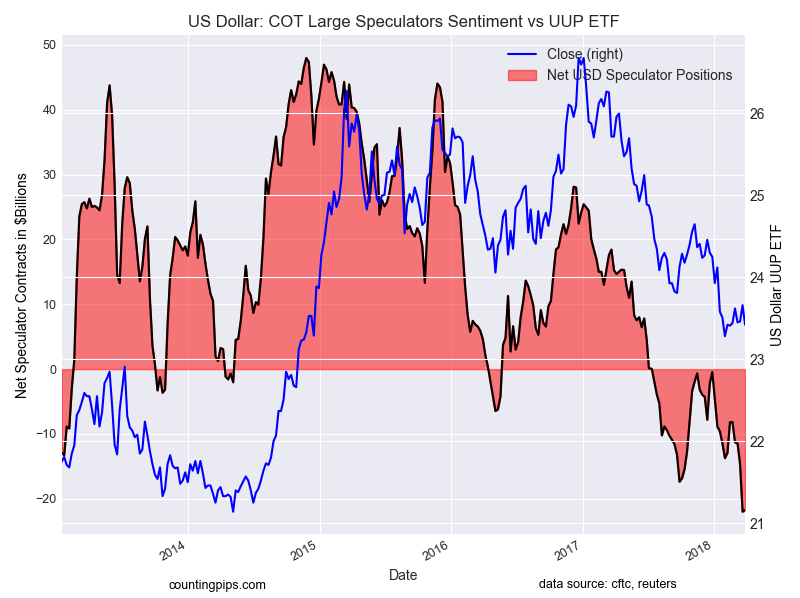
US Dollar Futures net speculator positions stood at $-21.73 billion this week
The latest data for the weekly Commitment of Traders (COT) report, released by the Commodity Futures Trading Commission (CFTC) on Friday, showed that large traders and currency speculators trimmed their bearish bets for the US dollar this week.
Non-commercial large futures traders, including hedge funds and large speculators, had an overall US dollar net position totaling $-21.73 billion as of Tuesday March 27th, according to the latest data from the CFTC and dollar amount calculations by Reuters. This was a weekly rise of $0.26 billion from the $-21.99 billion total position that was registered the previous week, according to the Reuters calculation (totals of the US dollar contracts against the combined contracts of the euro, British pound, Japanese yen, Australian dollar, Canadian dollar and the Swiss franc).
The aggregate US dollar speculative position remains in a very bearish level with the overall standing below the $-20 billion threshold for a second week. Overall, the dollar position has been in bearish territory for thirty-seven straight weeks dating back to July of 2017.
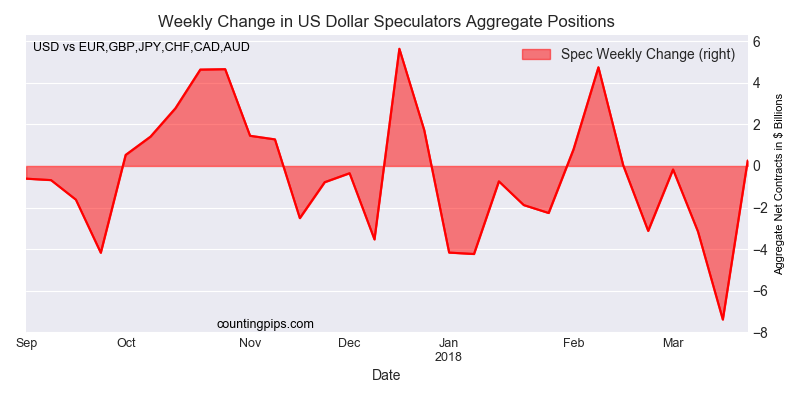
Weekly Speculator Contract Changes:
This week saw four substantial changes (+ or – 10,000 contracts) in the individual currency contracts for the speculator category.
The Japanese Yen positions surged higher again by over +18,000 contracts this week following a spike higher by over +57,000 contracts last week. Spec positions are at a small bearish overall position of -3,668 net contracts. This is the best level for the yen since November of 2016.
British pound sterling positions rose by over +10,000 contracts this week after gaining by over +15,000 contracts last week. The GBP level is now at the highest bullish position since July 15th of 2014 when net positions totaled +38,770 contracts.
Canadian dollar positions sharply dropped by over +50,000 contracts this week and fell over into a net bearish position for the first time since July 11th of 2017.
Mexican peso positions rose by over +22,000 contracts this week after falling by over -20,000 contracts last week. The gain saw peso positions back above the +80,000 contract level for the third time in the last four weeks.
Overall, the major currencies that improved against the US dollar this week were the euro (8,325 weekly change in contracts), British pound sterling (10,369 contracts), Japanese yen (18,331 contracts) and the Mexican peso (22,942 contracts).
The currencies whose speculative bets declined this week versus the dollar were the Swiss franc (-1,199 contracts), Canadian dollar (-51,610 contracts), Australian dollar (-9,851 contracts) and the New Zealand dollar (-1,387 contracts).
Table of Weekly Commercial Traders and Speculators Levels & Changes:
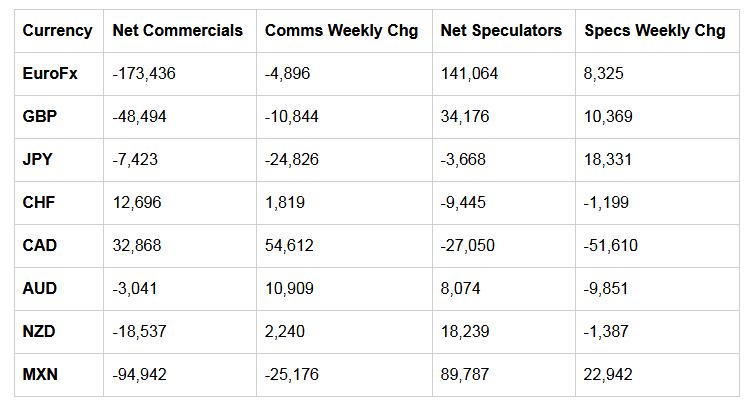
Weekly Charts: Large Trader Weekly Positions vs Price
EuroFX:
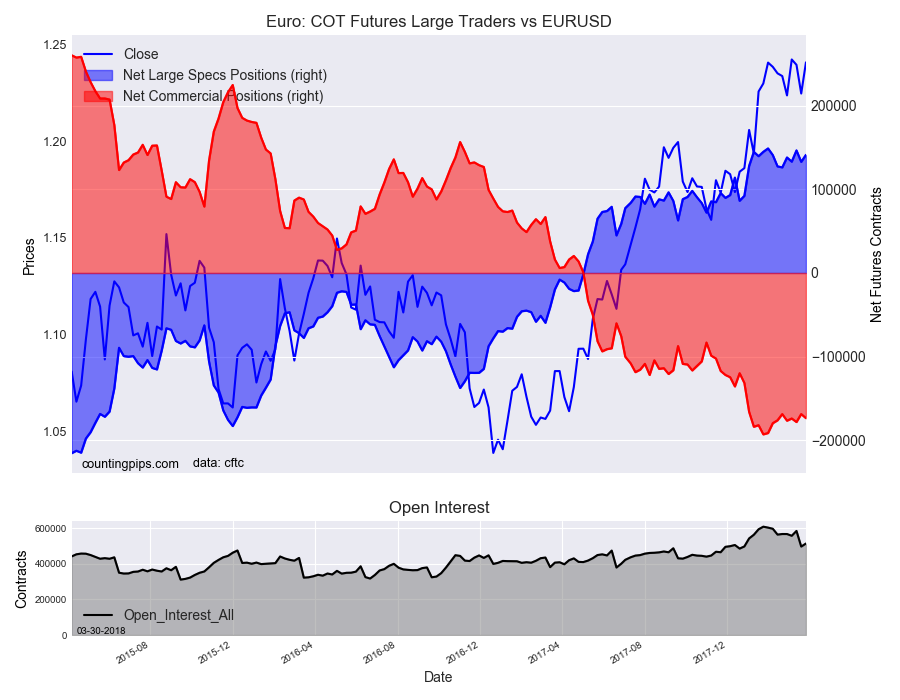
British Pound Sterling:
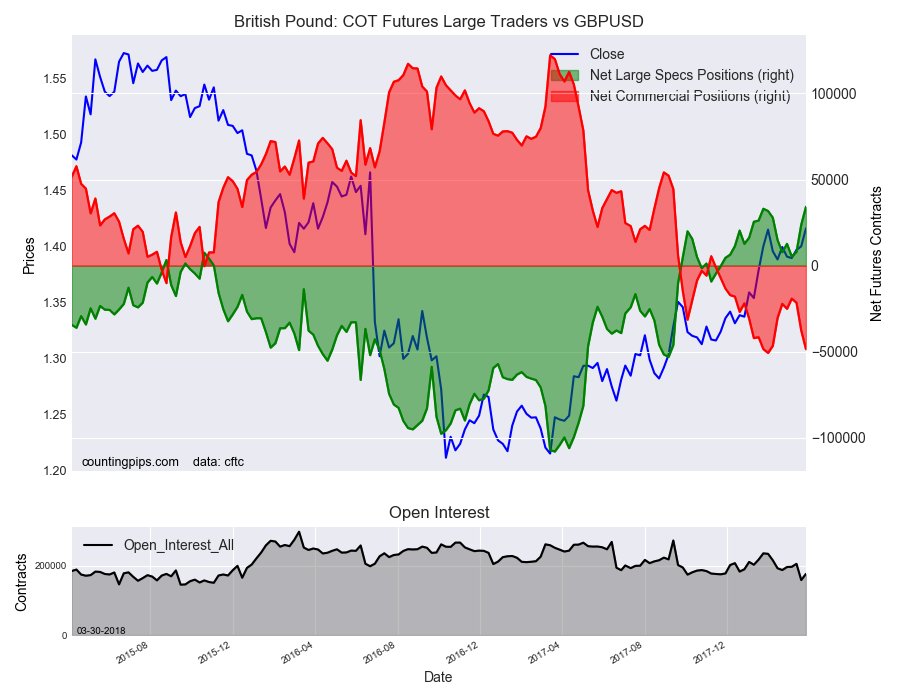
Japanese Yen:

Swiss Franc:
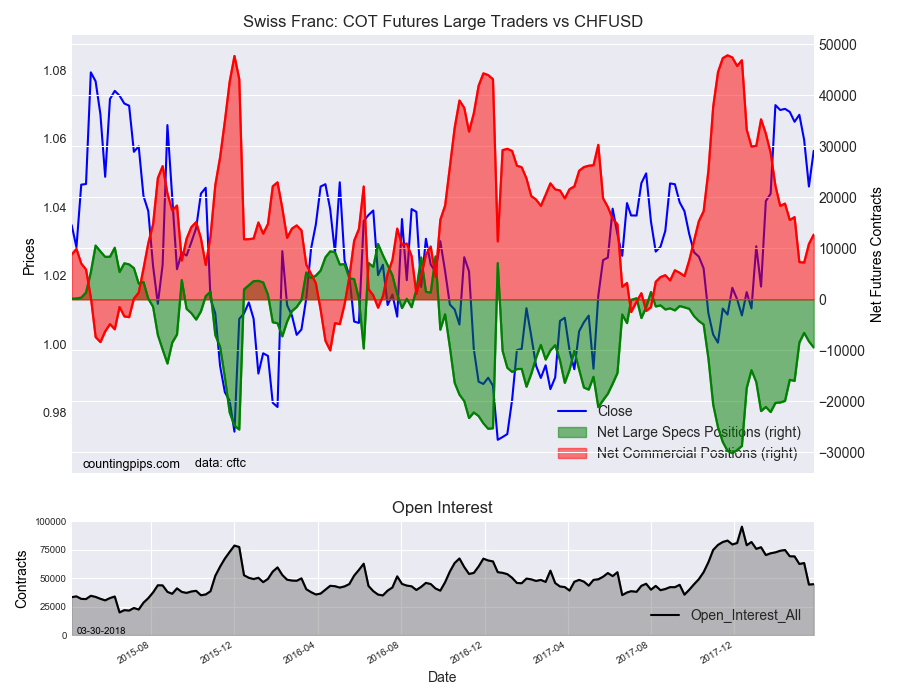
Canadian Dollar:
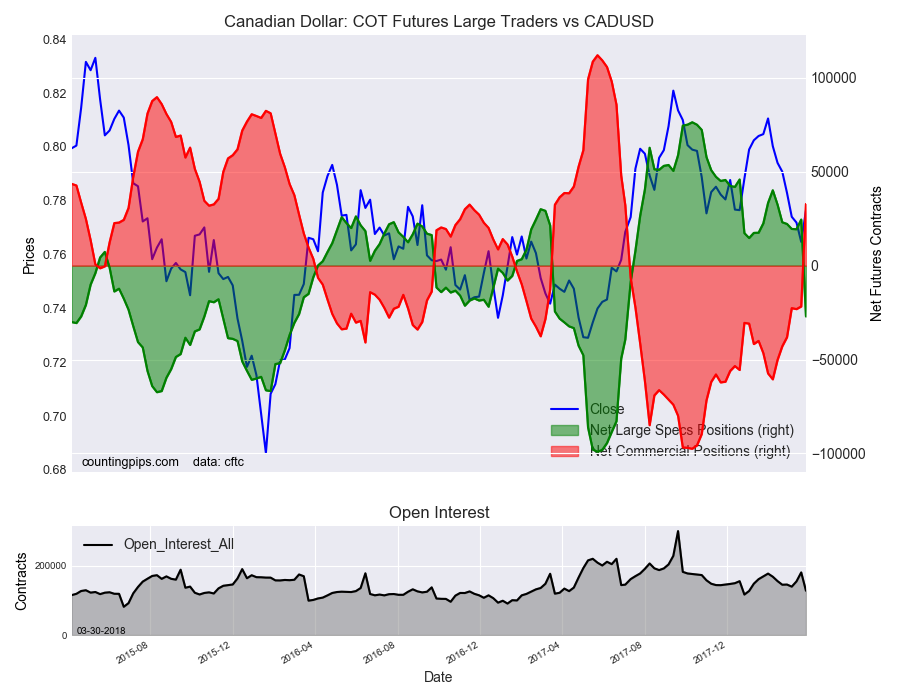
Australian Dollar:
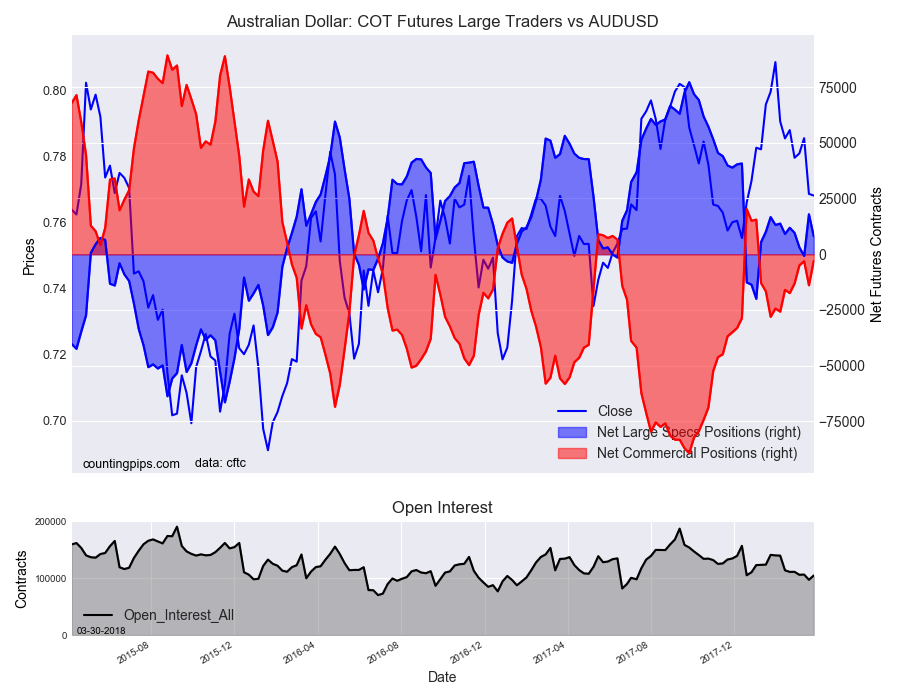
New Zealand Dollar:
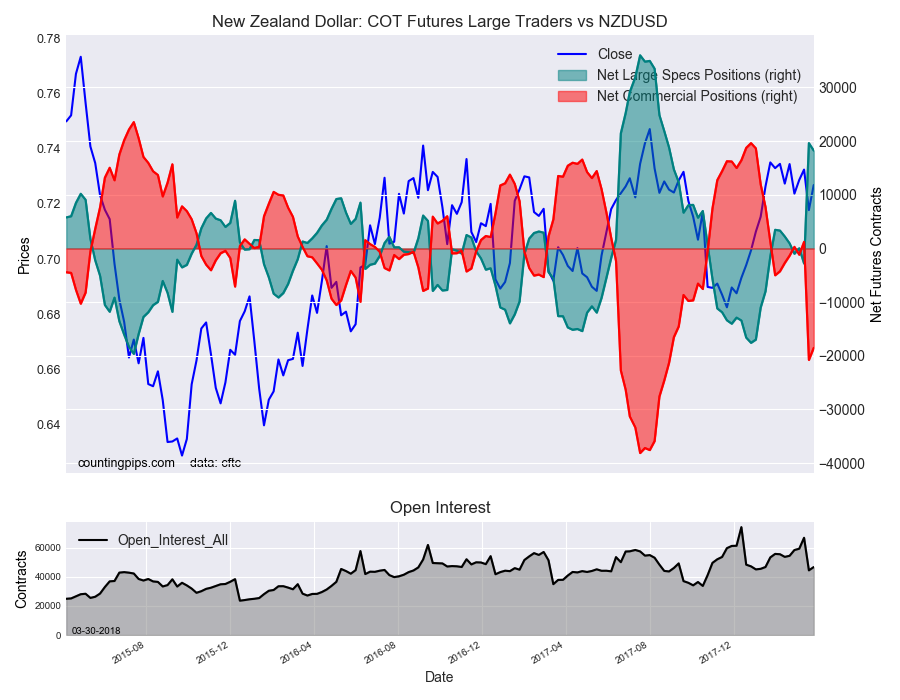
Mexican Peso:
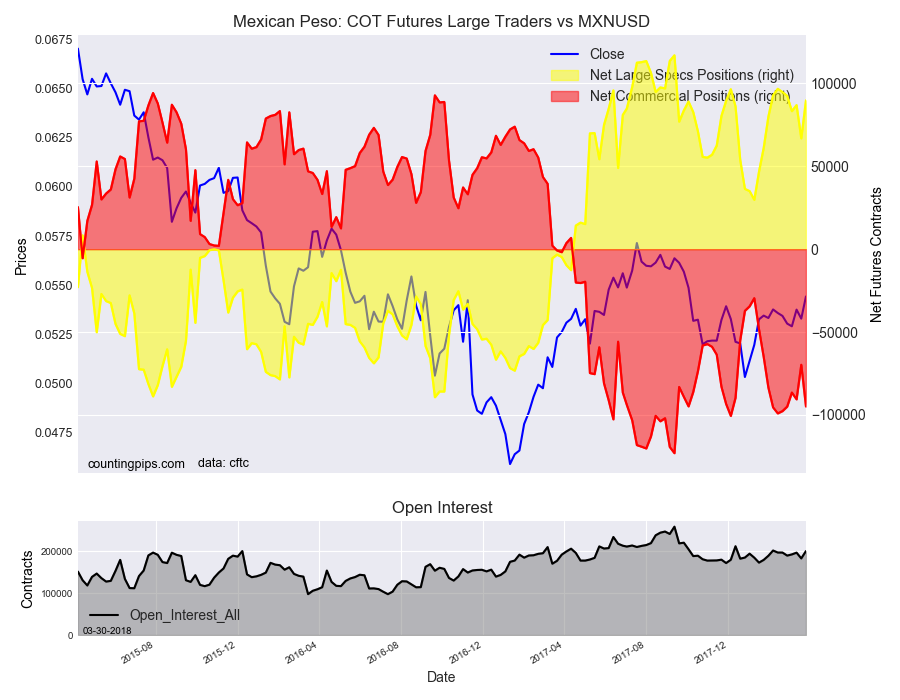
*COT Report: The weekly commitment of traders report summarizes the total trader positions for open contracts in the futures trading markets. The CFTC categorizes trader positions according to commercial hedgers (traders who use futures contracts for hedging as part of the business), non-commercials (large traders who speculate to realize trading profits) and nonreportable traders (usually small traders/speculators). Find CFTC criteria here: (http://www.cftc.gov/MarketReports/CommitmentsofTraders/ExplanatoryNotes/index.htm).
The Commitment of Traders report is published every Friday by the Commodity Futures Trading Commission (CFTC) and shows futures positions data that was reported as of the previous Tuesday (3 days behind).
Each currency contract is a quote for that currency directly against the U.S. dollar, a net short amount of contracts means that more speculators are betting that currency to fall against the dollar and a net long position expect that currency to rise versus the dollar.
(The charts overlay the forex closing price of each Tuesday when COT trader positions are reported for each corresponding spot currency pair.) See more information and explanation on the weekly COT report from the CFTC website.
